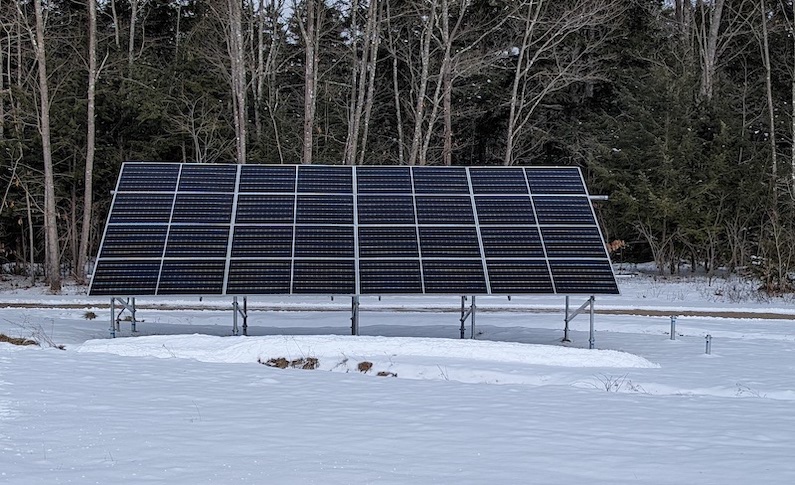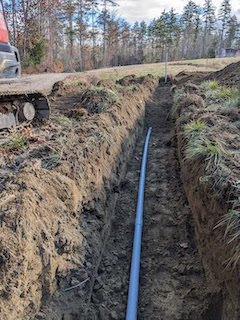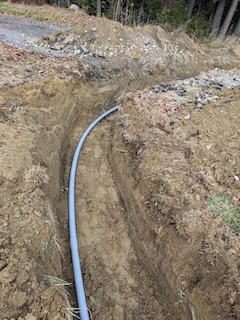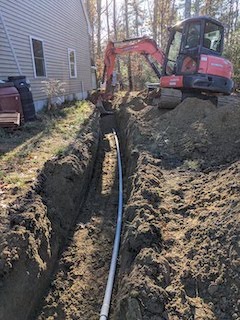The topic of renewable energy has been something our family has been talking about for a while. As such, we recently had solar panels installed on our property. This post shares our experience of the installation process, from start to finish and beyond.
Our decision to invest in solar panels was driven by a desire to reduce our carbon footprint and make a positive impact on the environment. Maine’s standard offering is still powered heavily by natural gas (~29%), so even when electrifying a home, one may still be “consuming” more fossil fuels than you intend to. Also, the stability of our future electricity costs was a motivator. 1

We worked with the team at Maine Solar Solutions to analyze our energy needs and potential ground mount locations based on sun exposure. Luckily for us, there was an area on our property that gets very little shade throughout the day, regardless of the season. While the array is visible from parts of our house, solar efficiency was important to us.
Determining the right size for our solar system was a bit tricky as we have not yet had heat pumps installed in our house. These will consume much more electricity in the winter and summer months than our current electricity bills show. Since we couldn’t be sure exactly how much more electricity we’d be using, we aimed to be at about 120% of our current electricity usage. It should be noted that this is all a bit of a dark art. There are models used to estimate how much the array will produce, but the whole thing is obviously very weather dependent.
After some back and forth, we decided on a 6kWh inverter and 16 480W panels. Additionally, we decided to hedge our bets and leave one side of the array able to have another 4 panels added if we needed it. In order to accommodate the potential 1.92kWh expansion, we bumped up the inverter size to 7.6kWh.
Before any dirt was dug or a panel was mounted, a crew came out to do a final walk through and take notes of the site. They put stakes in the ground outlining where the array would sit and they painted a proposed path for the conduit. We also decided that the inverter would be mounted on the outside of the garage, near the utility pole.
The next step was actually digging a trench for the conduit, which we opted to do ourselves (with familial help). This would allow our solar panels to connect to our home’s electrical grid. While the array site was awesome for sun exposure, it was quite a ways from our main utility pole. Additionally, it required a pretty adventurous path around our newly paved driveway. All told, we laid 280ft of Schedule 40 conduit underground.



A few days later, a subcontractor came to drill ground screws where the site prep crew had put stakes. With both the conduit and ground screws done, we were ready to move into the next phase: panel installation.
The installation of our solar panels was a precise process that required professional expertise. Maine Solar Solutions had to run the wires through our lengthy conduit and install the ground mounts. While panels were being mounted and wired at one end, the electrician was installing the inverter and hooking everything to the grid on the other end.
The entire process, from initial consultation to final installation, was an educational endeavor. It spanned from June 22nd, 2023 to December 29th, 2023. We navigated various aspects, including selecting the right amount of panels, understanding the current and future electrical needs, and managing the installation timeline. In the end, I’m glad we made the choices we did and I’m happy to be producing our own electricity here on our property.
If you’re considering solar for your home or property, I highly recommend Maine Solar Solutions. They were instrumental in our project. Their expertise, from assessing our property’s solar potential to the final installation, was invaluable. They guided us through each stage, ensuring we were comfortable and informed throughout the process. I found particular value in the parts that included working with Central Maine Power to become an official power generation site. Those documents are quite dense and you do have to sign them, so understanding what they’re covering is important.
By the numbers!
- Inverter: 7.6kWh
- Solar Array: 16 480W panels (7.68kWh)
- Total cost (not including trenching/conduit): ~$33k
- Federal Tax Credit: ~$10k
- 1.It should be noted that this price stability isn't guaranteed forever. Solar power generation remuneration and/or crediting is the purview of state government and the utility company. Right now, CMP (Central Maine Power) does net metering with residential generation sites. While they don't pay us for the energy we're pushing into the grid, they do give us energy credits that can be used for up to 12 months. This is helpful for being able to "use" the generation from the daytime to pay for consumption during the night. And, similarly, summer generation can cover winter consumption.
But this may not be true forever. As governments change focus and economic viability of utility companies change, net metering could be phased out. My hope is that by the time this happens, if it happens at all, battery storage will have become more affordable and we could capture daytime generation for use during the night. ↩